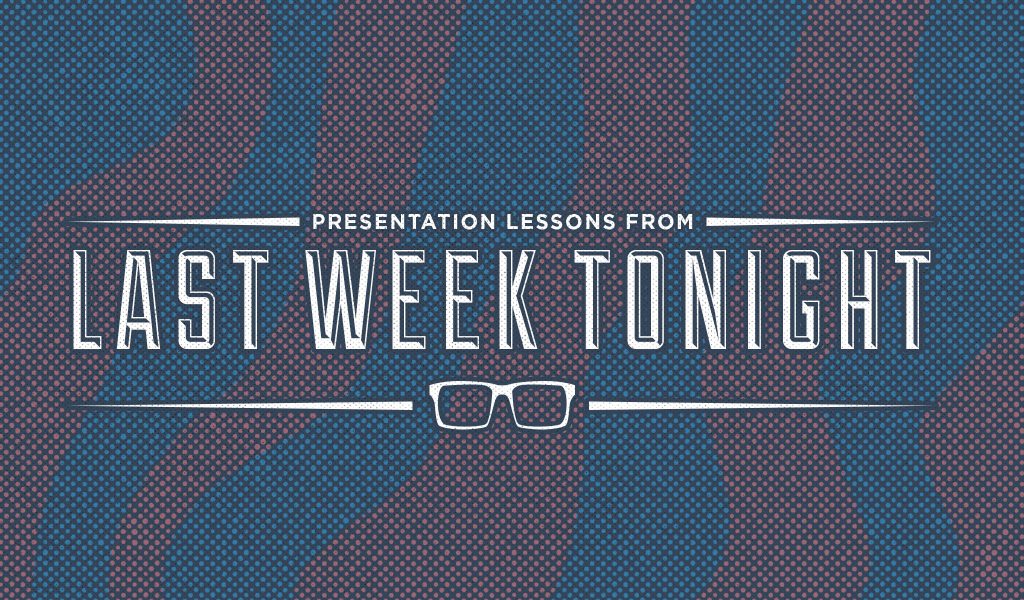
Each Sunday night, John Oliver delivers a presentation on his award winning show, “Last Week Tonight.” His show covers a variety of topics that range from headlining news, politics around the world, and social issues. These segments normally run around 20 minutes and are chalk full of research. But as a viewer, it’s hard to recognize how much of his monologues are cemented in research because of the humor and structure. Whether you are a fan of the show or not, there are plenty of presentation lessons from “Last Week Tonight” that you can use for your own presentations.
Let’s look at this segment as an example for how Oliver delivers a presentation.
Presentation Lessons from “Last Week Tonight”
First, right out the gate he states what this segment will be about: Science. He has a supporting to illustrate this. Then, with some great writing, he states his own point of view on the subject by giving it a humorous definition. He uses video clips to back that up. Within the first 30 seconds of this segment, Oliver has already used visuals and humor to introduce his message on how science is presented in the mainstream media and online.
To further illustrate how science is being manipulated into having a great shock value on the public, Oliver uses coffee as an example. Headline after headline, coffee is made to sound like a cure and a poison. All the contradicting articles can cause a reader to harness a belief that science is not factual. This leads to Oliver’s agenda for the night: why there is so much fake science being spread. He answers this with three main points that I will explain: the pressure scientists face, the problems with exploratory studies and why this is dangerous.
Related Post: HBO’s John Oliver Debunked a Ton of Scientific Studies
Oliver begins with the pressure scientists face to get published. His soundbite from an actual scientist explaining this is like using a quote in your PowerPoint. Oliver is using credible resources to back up his claims. To get scientific studies published, there has to be a new discovery being made. Some scientists are manipulating these studies like changing the length of time in order to claim there’s a new finding.
A second problem scientists face is getting replication studies. This is when a completed study is repeated by another scientist to see if the results stay they same. Again, Oliver uses a real life scientist to back up this claim. This presents a major problem in our society. Exploratory studies are being taken as fact and are not being tested again and again to ensure accuracy. Now, Oliver has seamlessly presented two problems that need to be fixed.
Oliver’s team of researchers find several examples of how scientific studies are taken out of context and presented incorrectly on television. The amount of preparation that went into this segment is impressive. And it all leads to his third main point: why this is dangerous. By picking and choosing which scientific studies we want to believe or not believe is simply not how science works. This can lead to people disagreeing with major scientific discoveries like vaccinations preventing certain diseases and climate change.
Oliver’s solution to stopping this spread of false information boils down to the newscasters. He asks them to source and provide context for each study they talk about. This call to action could have been better amplified with an activity; like asking newscasters to name to source and provide the context the next time they present a scientific study; or for scientists to call out news programs online the next time they see a study falsely represented.
While John Oliver is only a television host and does not consider his show to be journalism, he is practicing many techniques that journalists use in their work. He has loads of research to serve as examples of the problem. And he is transparent in his sourcing and investigation. In this segment, he clearly sets up his topic, presents his agenda and incorporates three main points, and ends with a solution. Humor is always mixed in. “Last Week Tonight” is a tool presenters can use to craft their next presentation.
More from the Ethos3 Blog:
The Role of Research in Presentations
Why Presenters Should Think Like Journalists
3 Science-Backed Ways to Use Humor in Your Presentations